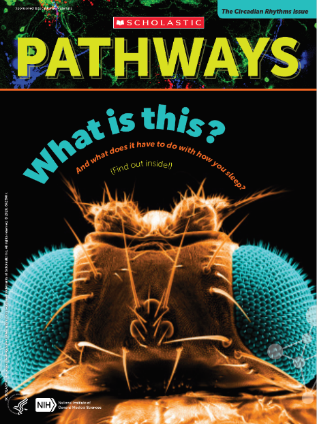Newswise — The National Institute of General Medical Sciences (NIGMS) and Scholastic, Inc., bring you the third edition of Pathways, a collection of free resources that teaches students about basic science and its importance to health, and exciting research careers.
Pathways is designed for grades 6 through 12. The topic of this unit is circadian rhythms, the “schedules” our bodies follow over the course of a day. These rhythms influence processes like hunger and the sleep-wake cycle.

You’ll find information about:
- How the brain’s “master clock” and other bodily “clocks” drive circadian rhythms
- The average teen’s circadian cycle
- NIGMS scientists who study circadian rhythms and what they’re discovering
- Circadian rhythms research that won the Nobel Prize
- How blue light from electronic devices can affect our internal clocks
Featured in This Issue:
Dan Cavanaugh, Ph.D., assistant professor at Loyola University Chicago
Carrie Partch, Ph.D., associate professor at the University of California, Santa Cruz
Swathi Yadlapalli, Ph.D., assistant professor at the University of Michigan
Dustin Ernst, postdoctoral fellow at the University of California, San Diego
Filipa Rijo-Ferreira, Ph.D., postdoctoral associate at the University of Texas Southwestern Medical Center
Pathways [PDF] was distributed to teachers as a special insert in the March issue of Scholastic’s Science World magazine, and anyone can access and download materials for free on the Pathways website. Print copies of the first two issues are available for order, and copies of the third issue will be available soon.
Let us know on social media how you’re sharing Pathways in your classroom by using the hashtag #NIGMSPathways!
